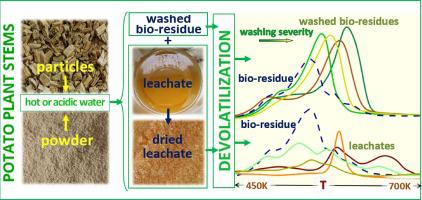Our official English website, www.x-mol.net, welcomes your
feedback! (Note: you will need to create a separate account there.)
碱金属和非结构成分含量高的生物残渣(马铃薯茎)的脱挥发分特征——清洗预处理强度的影响
Fuel ( IF 6.7 ) Pub Date : 2024-01-22 , DOI: 10.1016/j.fuel.2024.130993 Carmen Branca , Colomba Di Blasi

|
富含碱金属和非结构成分的生物残留物(马铃薯茎)经过热水(353 K)或酸性(0.1 mol/L 盐酸)水清洗。酸性预处理对脱矿质更有效,碱含量减少了 99%(粉末)或 90%(颗粒),相当于有机物溶解量分别约为 35% 或 17%(重量)。热水洗涤的后者数字大致相同(38 和 19 wt%),但碱仅减少了 78 或 64%。热重分析和 SEM-EDX 分析表明,渗滤液特性很大程度上取决于溶剂类型和残留物粒度。洗涤后的生物残留物在一定温度下分解,并且随着预处理变得更加严格(细粒度和酸性水洗涤),分解速度逐渐增加。先前针对未经处理的材料开发的多步骤全局动力学,并经过适当重新审视以纳入洗涤效果,揭示了重要成分变化的趋势。尽管淀粉溶解,但绝对峰值速率区的挥发性产物产量增加了约 40-65%,证明了纤维素含量的增加。果胶化合物几乎被消除,有利于肩部速率区,代表半纤维素分解,挥发性产物产量增加约 22-78%。

"点击查看英文标题和摘要"
















































 京公网安备 11010802027423号
京公网安备 11010802027423号